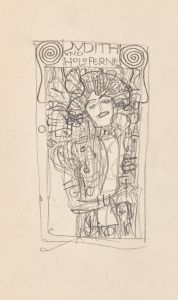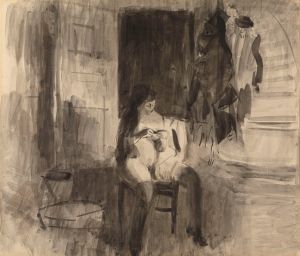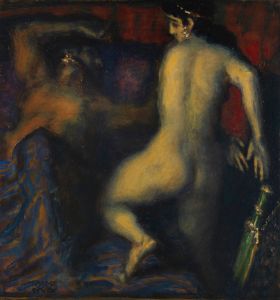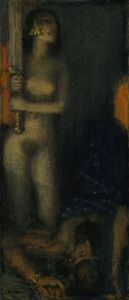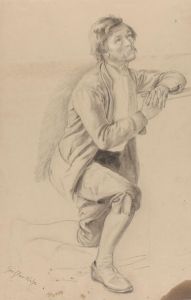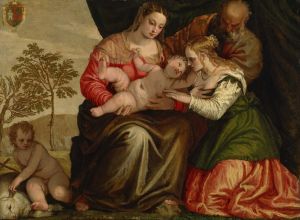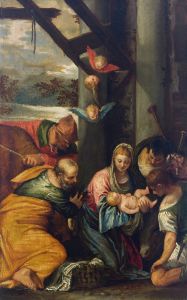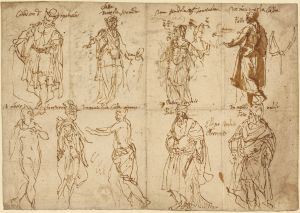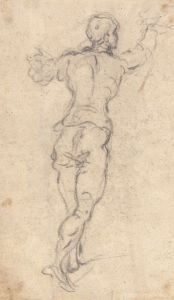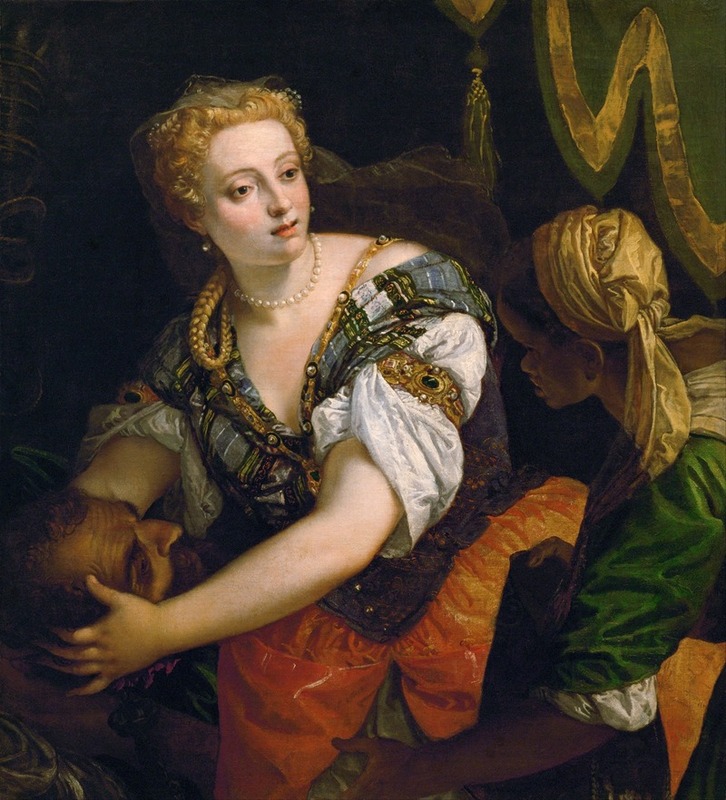
Judith With The Head Of Holofernes
A hand-painted replica of Paolo Veronese’s masterpiece Judith With The Head Of Holofernes, meticulously crafted by professional artists to capture the true essence of the original. Each piece is created with museum-quality canvas and rare mineral pigments, carefully painted by experienced artists with delicate brushstrokes and rich, layered colors to perfectly recreate the texture of the original artwork. Unlike machine-printed reproductions, this hand-painted version brings the painting to life, infused with the artist’s emotions and skill in every stroke. Whether for personal collection or home decoration, it instantly elevates the artistic atmosphere of any space.
Paolo Veronese's Judith with the Head of Holofernes is a painting attributed to the renowned Italian Renaissance artist Paolo Veronese (1528–1588). Veronese, whose real name was Paolo Caliari, was a leading figure of the Venetian school of painting, celebrated for his mastery of color, composition, and his ability to depict dramatic biblical and mythological scenes. This particular work portrays the biblical story of Judith, a Jewish heroine, who saved her people by beheading the Assyrian general Holofernes.
The painting depicts Judith holding the severed head of Holofernes, a moment of triumph and courage. The story originates from the deuterocanonical Book of Judith, which recounts how Judith used her wit and bravery to infiltrate the enemy camp, seduce Holofernes, and ultimately kill him to save her city of Bethulia. This subject was a popular theme in Renaissance and Baroque art, as it allowed artists to explore themes of heroism, virtue, and divine intervention.
Veronese's interpretation of the scene is characteristic of his style, emphasizing elegance and beauty even in moments of violence. Judith is often portrayed as a composed and noble figure, reflecting the Venetian ideal of grace and poise. The use of rich, vibrant colors and intricate details is typical of Veronese's work, showcasing his skill in creating visually stunning compositions. The painting likely includes elements of classical architecture or luxurious textiles, which were hallmarks of his artistic approach.
The exact date of the painting's creation is not definitively known, but it is generally placed within Veronese's mature period, when he was at the height of his artistic powers. The work is believed to have been commissioned for a private patron, as was common for such biblical subjects during the Renaissance. Its current location is not universally agreed upon, as several versions and copies of the Judith theme exist, some attributed to Veronese and others to his workshop or followers.
As with many works from this period, questions about attribution and provenance remain. While the painting is widely associated with Veronese, some art historians have debated whether it was executed entirely by the master himself or with the assistance of his workshop. However, the piece is generally regarded as an example of Veronese's ability to blend narrative drama with aesthetic refinement.
Judith with the Head of Holofernes exemplifies the enduring appeal of biblical themes in Renaissance art and highlights Veronese's contribution to the Venetian tradition of painting.





